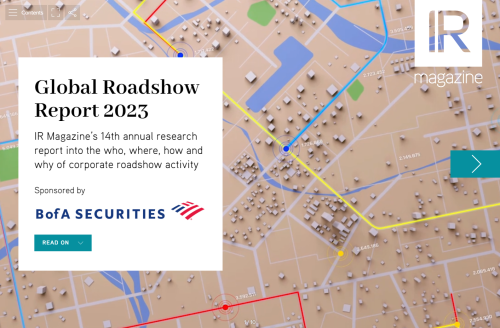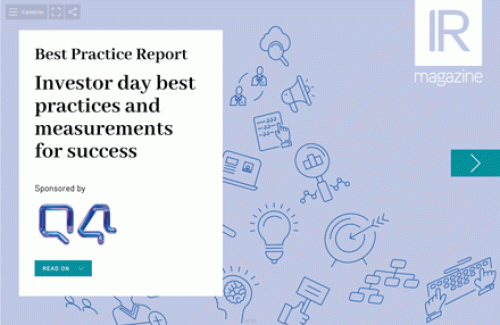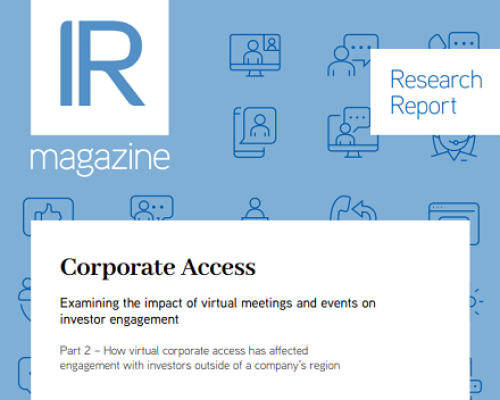A former buy-sider, Nate Abercrombie saw his research budget slashed and ‘was personally told not to expect any one-on-one management meetings’ following the introduction of Mifid II. In a bid to make corporate access more democratic, he launched his podcast, Investing with the Buyside – or the IwtB Podcast for short – which brings in-depth interviews with senior management to the masses. Here he talks problems in the midstream sector, getting management’s message out and Mifid II.
|
Nate Abercrombie, host of the |
What prompted your move from the buy side into the world of podcasts?
It was during one of the last sell-side conferences I attended as a buy-side analyst that I fully realized the need to democratize corporate access – not just for institutional money management firms, but also for the broader investment community.
In late 2017 at a midstream conference in Dallas, I had the opportunity to sit down and talk to various midstream management teams about the outlook for their companies and the industry. The price of crude oil was up moderately since the start of the year, the majority of midstream distribution cuts were behind us, and numerous midstream companies had laid the foundations to stabilize the business model. But the capital markets still weren’t biting, and the sector failed to attract much investor capital.
The energy sector in general, and the midstream sector in particular, had massively underperformed the broader market over just about every time period since the commodity price collapse of 2014. In 2017, industry fundamentals had improved substantially but headwinds specific to the industry more than overshadowed the positive developments. While those of us who followed the space closely might have argued that concerns were overblown, that didn’t matter much. There were – and continue to be – a lot of factors that hamper the appreciation of equity values of many companies and sectors, not just midstream. In my opinion, broader dissemination of information, especially management’s message, is first and foremost among those factors.
I often ask myself whether the underperformance of the midstream sector is justified – not only when I was an energy sector analyst at a large mutual fund company, but also as an individual who is now disproportionately invested in midstream. Throughout 2017 almost no management team I met with at investor events seemed to think so. Indeed, the sector’s poor performance dumbfounded many management teams. But those same teams also admitted that the industry faced several hurdles in attracting investor capital.
What are some of the problems the midstream industry was facing?
The first problem stemmed from the distribution cuts over the previous two years. Midstream had long been viewed as an income sector, one in which financial advisers and retail investors parked their capital with the expectation that the return on capital would help supplement retiree incomes and provide passive income to investors.
When midstream companies began cutting their dividends, financial advisers and retail investors fled the space. That’s important to note because the midstream investor base was overwhelmingly retail at the time. Some market observers have indicated that at the peak, retail investors owned more than three quarters of the shares or units of midstream/master limited partnership (MLP) companies.
Another problem for the industry was that the midstream sector was incorrectly viewed by many as having very little commodity price exposure. While it’s true that many midstream companies have little or no direct commodity price exposure, the indirect exposure was significant: if commodity prices decline below a certain level, producer volumes will eventually fall, resulting in lower midstream revenues from fewer ‘toll’ fees, which ultimately impairs a midstream company’s ability to maintain its dividend.
But the most significant obstacle for the midstream sector is the funding model. Until recently, most midstream companies funded growth projects by issuing almost equal amounts of debt and equity. As most people know, the North American shale boom resulted in massive oil and gas production growth. That meant there was a significant need to build new infrastructure to transport the growing volumes of hydrocarbons to demand centers.
Midstream companies required increasingly large sums of capital to fund the construction of pipelines, gathering systems and processing facilities. The funding requirements became so significant that finding buyers of newly issued shares became increasingly difficult. Institutional investors participated in secondary offerings, but the participation was somewhat limited. After the commodity price collapse of mid-2014 and the distribution cuts that followed, the retail investor base fled the sector and hasn’t returned in a meaningful way. Institutional investors, uncertain of the direction of commodity prices and wary of the MLP corporate structure, sat on the sidelines and watched the carnage escalate.
One last thing worth mentioning about the sector is that midstream companies were significantly underrepresented in the major indexes. The primary reason relates to corporate structure: numerous indexes, including the S&P, explicitly exclude MLPs from the list of index candidates. Compounding the problem further was the fact that the energy sector became a tiny part of various other major indexes. The mutual fund company I worked for at the time had the Russell 1000 Growth index as its primary benchmark. Energy, as a percentage of the total value of the other sectors that made up the index, went as low as 0.5 percent of the total index!
The relative size of a sector in an index is an important factor to highlight because many fund managers today are index-sensitive and many mutual fund investment mandates require an equal balance of sector exposure. These factors hinder firms like the one I worked for from taking sector ‘bets’ even though valuations in that sector may appear extremely attractive.
How did this thinking result in the IwtB Podcast?
It was with this backdrop that I started obsessing over some of the flaws in the institutional money management business and began thinking about my next steps. The money manager I worked for wasn’t structured in a way that would allow it to take advantage of market dislocations, despite the relative value and compelling outlook. Midstream’s underrepresentation in indexes meant the sector was unlikely to benefit from the growth in passive investing. Moreover, corporate trading restrictions made investment difficult for those investors that knew the sector best. The appetite for midstream investing among those institutions with large sums of capital just wasn’t there.
The midstream conference I attended late last year was the straw that broke the camel’s back. Listening to midstream management teams talk about constructive industry fundamentals, shored-up balance sheets, large coverage ratios and the new self-funding approach for financing growth, I realized there was an inherent need for broader distribution of management’s message. I created Investing with the Buyside primarily for that reason, but there were other reasons as well. The firm I worked for had recently merged with a European mutual fund company, which provided a lot of insight into what the ultimate implications were from the implementation of Mifid II. Research budgets were being slashed – mine by more than 60 percent – and I was personally told not to expect any one-on-one management meetings going forward.
How did you see Mifid II potentially impacting your role?
Mifid II was going to make my job as an equity researcher a lot more difficult. More importantly, I believed the opportunities for corporate management to provide the capital markets with their company’s investment story would shrink, at least through the traditional corporate access channels. The IwtB Podcast was thus established to fill the void and provide management teams with a platform to connect with potential investors of all types: institutional, hedge funds, advisers and retail.
What have been some of the main challenges you’ve faced in getting senior management onto the podcast?
The main challenges have been podcast awareness, name recognition/reputation and the lack of awareness that there are significant changes to corporate access as a result of Mifid II.
Even though podcasting has been around since the early 2000s, there are still a lot of folks who don’t know what they are and how to find them. Most of the success in securing interviews has been in working with the younger generation of IROs who are more familiar with podcasts and are willing to experiment with new forms of media to get the company’s message out. Name recognition is something every new business must deal with, but it’s probably a more acute issue in an industry where well-known investment banks have traditionally provided this service. Additionally, it’s been difficult to get management teams outside of the companies and sectors I covered as a buy-side analyst because they’ve never seen my name before. Connections go a long way in this industry.
Lastly, most companies do not currently see the need for more exposure because they believe their corporate access needs are being met by the sell side. Many of the IROs I’ve spoken to, despite politely declining an invitation for an interview, have been eager to hear my perspective on how Mifid II is changing the dynamics of corporate access for the buy side. As a podcaster, my goal is to provide interesting and valuable information to investors, but I also spend quite a bit of time trying to help IROs understand the far-reaching implications of Mifid II and how it’s changing corporate access in the US. Fortunately, there are reputable resources like IR Magazine that I can point to in getting the message across.
Having hosted IwtB for six months now, where do you see corporate access heading in a post-Mifid II world, and what could IROs be doing to help management get the message out?
I recently attended a NIRI dinner on Mifid II that was centered around corporate access in the US. While US-based asset managers are not currently subject to the regulations, I was surprised to learn that many of the larger institutional money managers have already started adopting various rules laid out in Mifid II. Right now, it’s difficult to say what the long-term implications of Mifid II in the US will be, but what is clear is that the genie is out of the bottle and the clients of institutional money managers are pushing for greater fee transparency. And based on what I’m hearing from IROs in the US, there is a serious need for more information, guidance and resources for the IR community to understand how to navigate the changes ahead.
It’s my personal view that IROs will need to be much more proactive when it comes to scheduling and co-ordinating meetings, especially with prospective shareholders. That means relying less on the sell side, developing and improving in-house IR capabilities and looking to third-party vendors to help connect with potential buyers. I also think these imperatives are particularly important for IROs of small to micro-cap companies given the shrinking ranks of sell-side analysts and increased focus on larger-cap companies.











